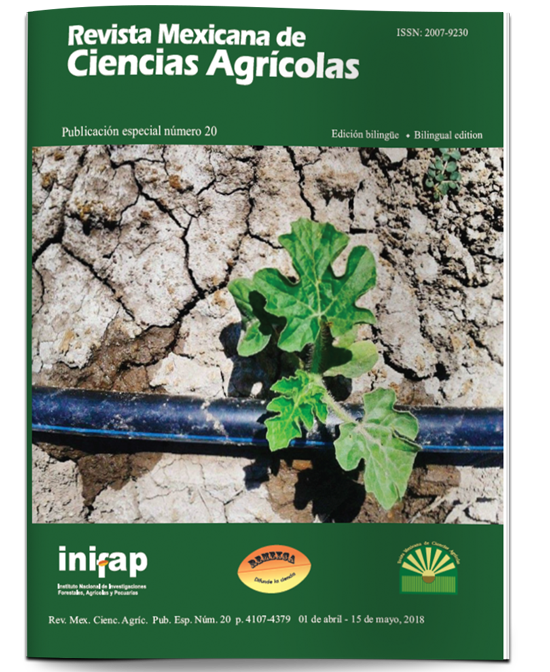Physical, chemical and natural alternatives to control Meloidogyne spp. in tomato in greenhouse
DOI:
https://doi.org/10.29312/remexca.v0i20.983Keywords:
Licopersicon esculentum Mill., Tagetes erecta, cempasúchil, nematodes, solarization.Abstract
The objective of the present work was to evaluate the effectiveness of control of Meloidogyne spp., through the use of physical, chemical and natural alternatives, physics with solarization, chemistry with the nematode Vidate and the natural one by means of the interspersed plantation of cempasuchil (Tagetes erecta) between tomato plants, as well as the combination between the alternatives used. The experiment was carried out in a commercial greenhouse, located in the community of Chaparrosa, municipality of Villa de Cos, Zacatecas, in 2012. An experimental design was used in complete blocks at random with four repetitions and experimental units of a plant. Water, fertilizer and other agrochemicals were applied by drip, with the handling that the producer normally does. Twelve variables were measured, result of count of nematodes, bunches and fruit weight in different dates. The analysis of variance detected significant statistical differences in seven of the variables; with the results and the correlation analysis that was performed among the variables, it was concluded that, with the inclusion of a cempasuchil plant interspersed between tomato plants, as well as this combined treatment with solarization, the lowest number of nematodes and the greater yield of fruits.
Downloads
Downloads
Published
How to Cite
Issue
Section
License
The authors who publish in Revista Mexicana de Ciencias Agrícolas accept the following conditions:
In accordance with copyright laws, Revista Mexicana de Ciencias Agrícolas recognizes and respects the authors’ moral right and ownership of property rights which will be transferred to the journal for dissemination in open access. Invariably, all the authors have to sign a letter of transfer of property rights and of originality of the article to Instituto Nacional de Investigaciones Forestales, Agrícolas y Pecuarias (INIFAP) [National Institute of Forestry, Agricultural and Livestock Research]. The author(s) must pay a fee for the reception of articles before proceeding to editorial review.
All the texts published by Revista Mexicana de Ciencias Agrícolas —with no exception— are distributed under a Creative Commons License Attribution-NonCommercial 4.0 International (CC BY-NC 4.0), which allows third parties to use the publication as long as the work’s authorship and its first publication in this journal are mentioned.
The author(s) can enter into independent and additional contractual agreements for the nonexclusive distribution of the version of the article published in Revista Mexicana de Ciencias Agrícolas (for example include it into an institutional repository or publish it in a book) as long as it is clearly and explicitly indicated that the work was published for the first time in Revista Mexicana de Ciencias Agrícolas.
For all the above, the authors shall send the Letter-transfer of Property Rights for the first publication duly filled in and signed by the author(s). This form must be sent as a PDF file to: revista_atm@yahoo.com.mx; cienciasagricola@inifap.gob.mx; remexca2017@gmail.
This work is licensed under a Creative Commons Attribution-Noncommercial 4.0 International license.



